Abstract
Nearly 700 standard plate count (SPC) bacteria were isolated from drinking water and untreated surface water and identified according to a scheme developed to permit the rapid, simple classification of microorganisms to genus, species, or group. Actinomycetes and Aeromonas species were the two most common groups of SPC bacteria in chlorinated distribution water. Aeromonas spp. and Enterobacter agglomerans were the two most common groups of SPC bacteria in raw water. Identification of bacterial populations before and after contact with chlorine (1 to 2 mg/liter) for 1 h revealed that chlorination selected for gram-positive bacteria. Water that contained high densities of bacteria known to be antagonistic to coliforms had low coliform isolation rates. The membrane filtration technique for enumerating SPC bacteria recovered significantly higher numbers (P < 0.001) than the standard pour plate technique.
Full text
PDF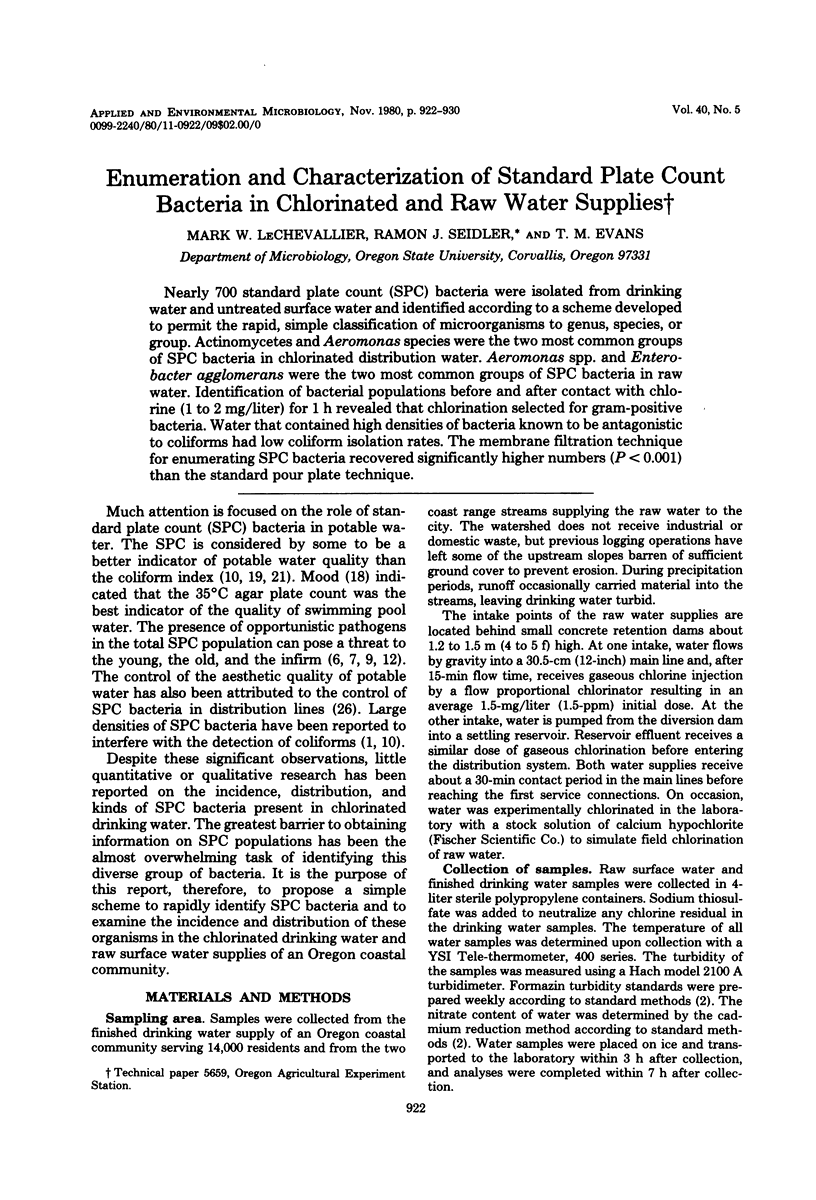
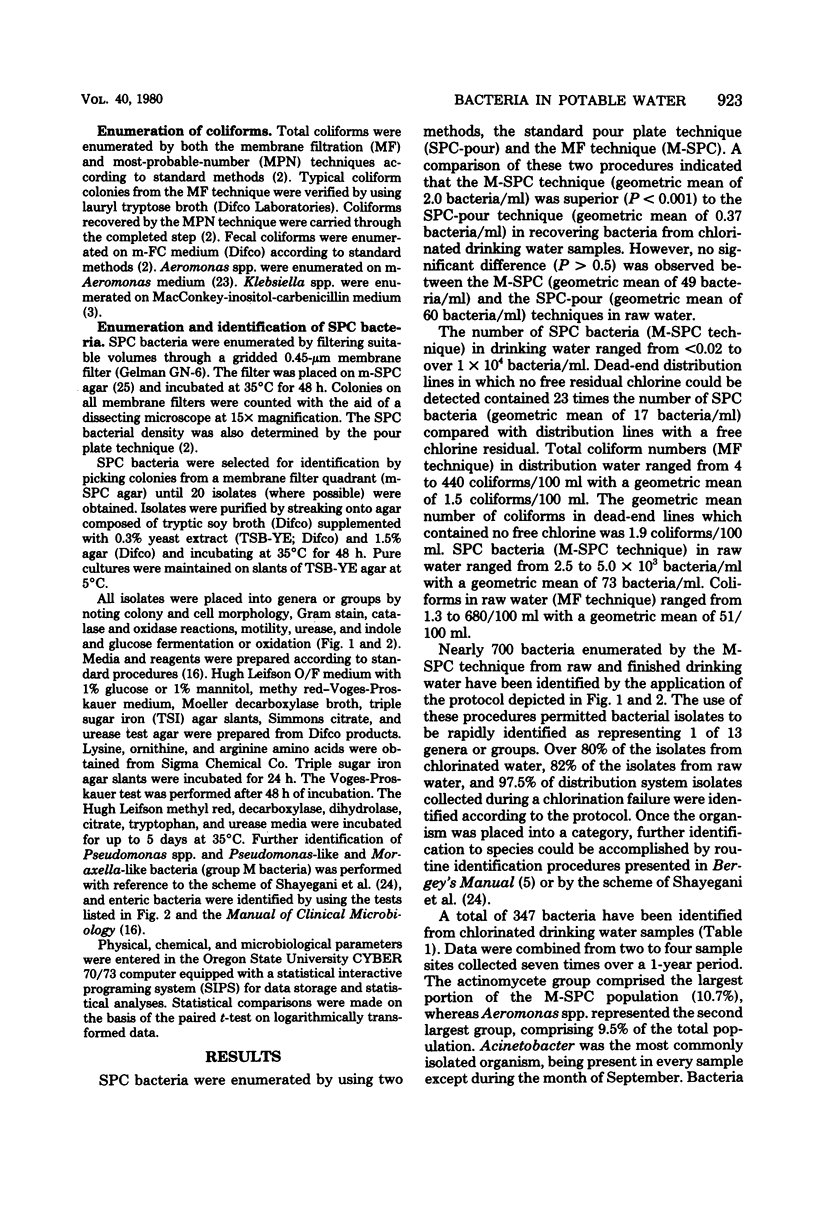

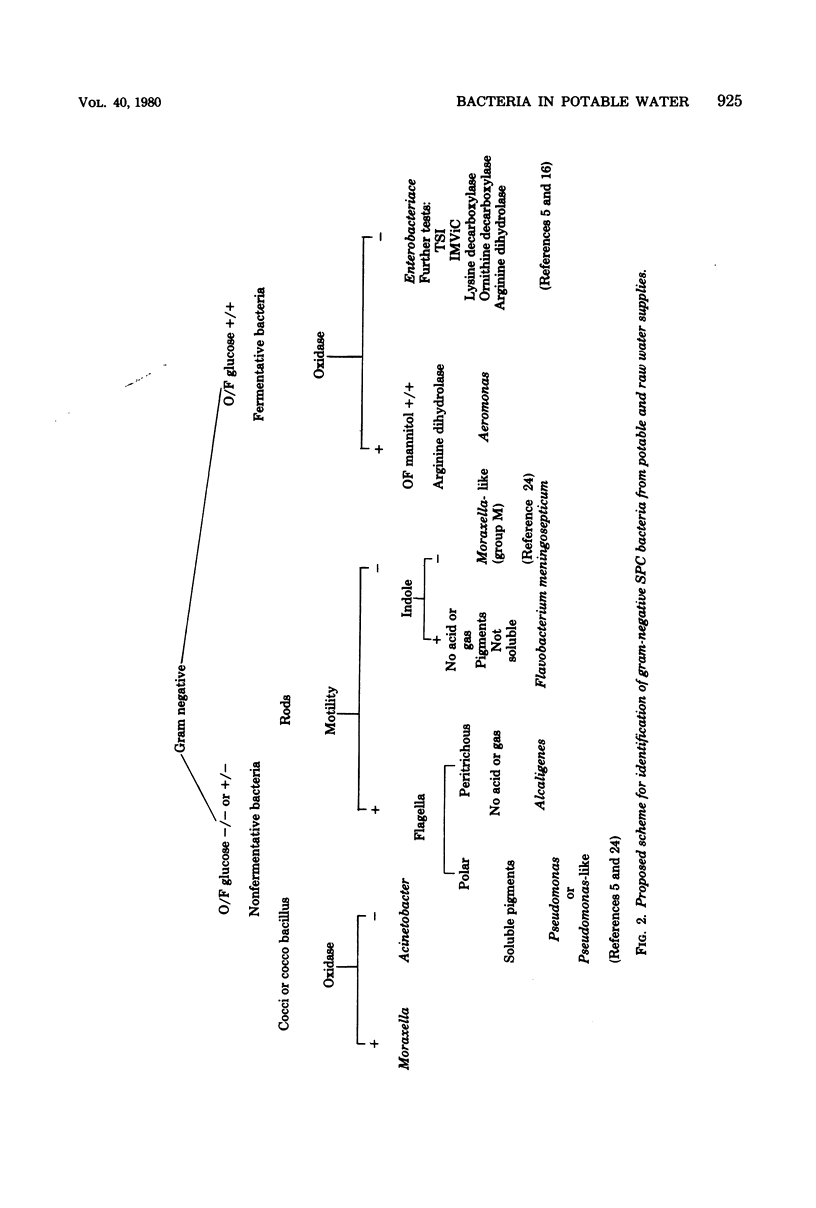
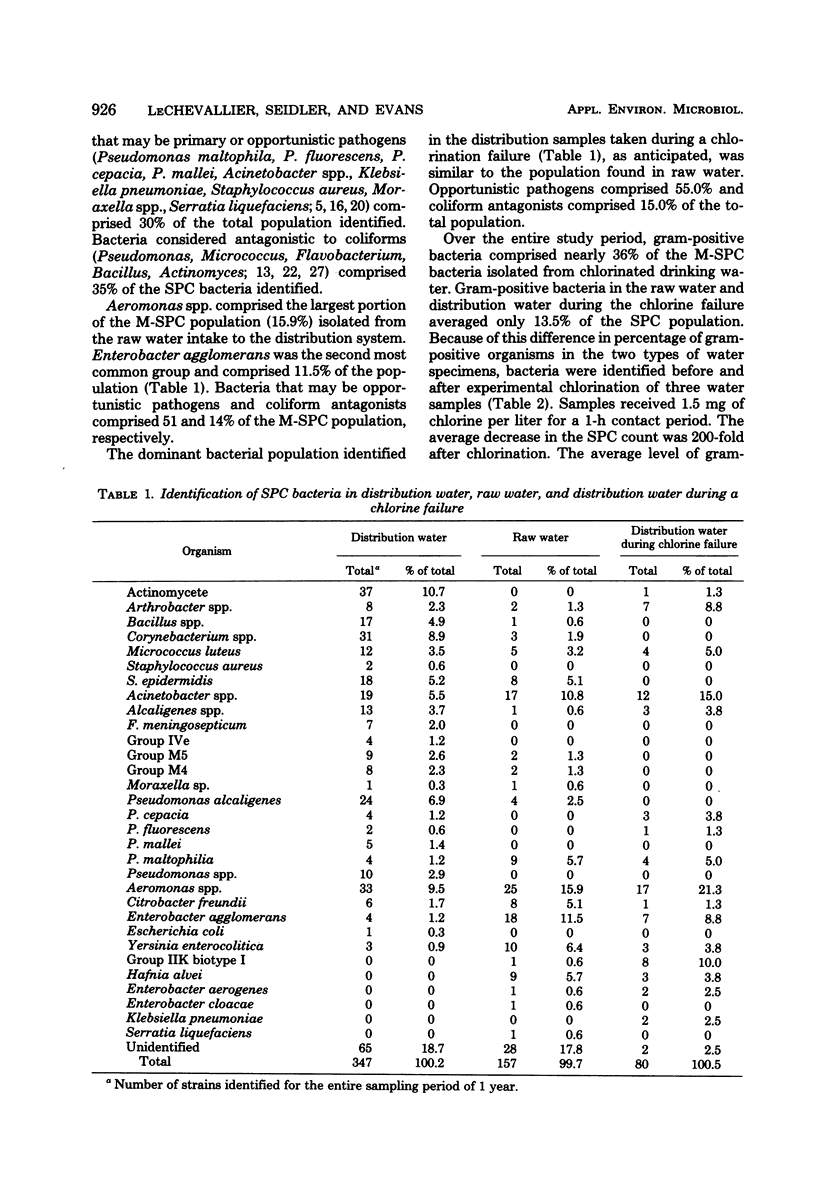
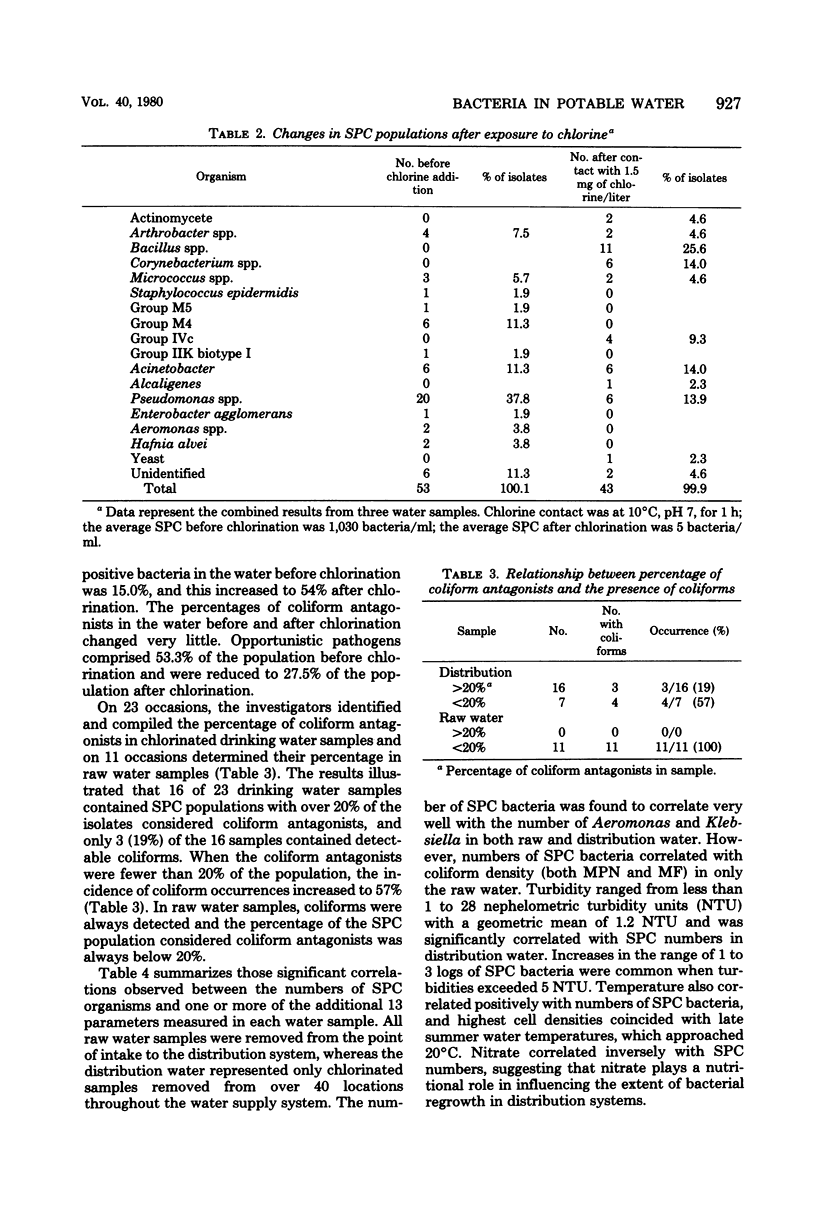
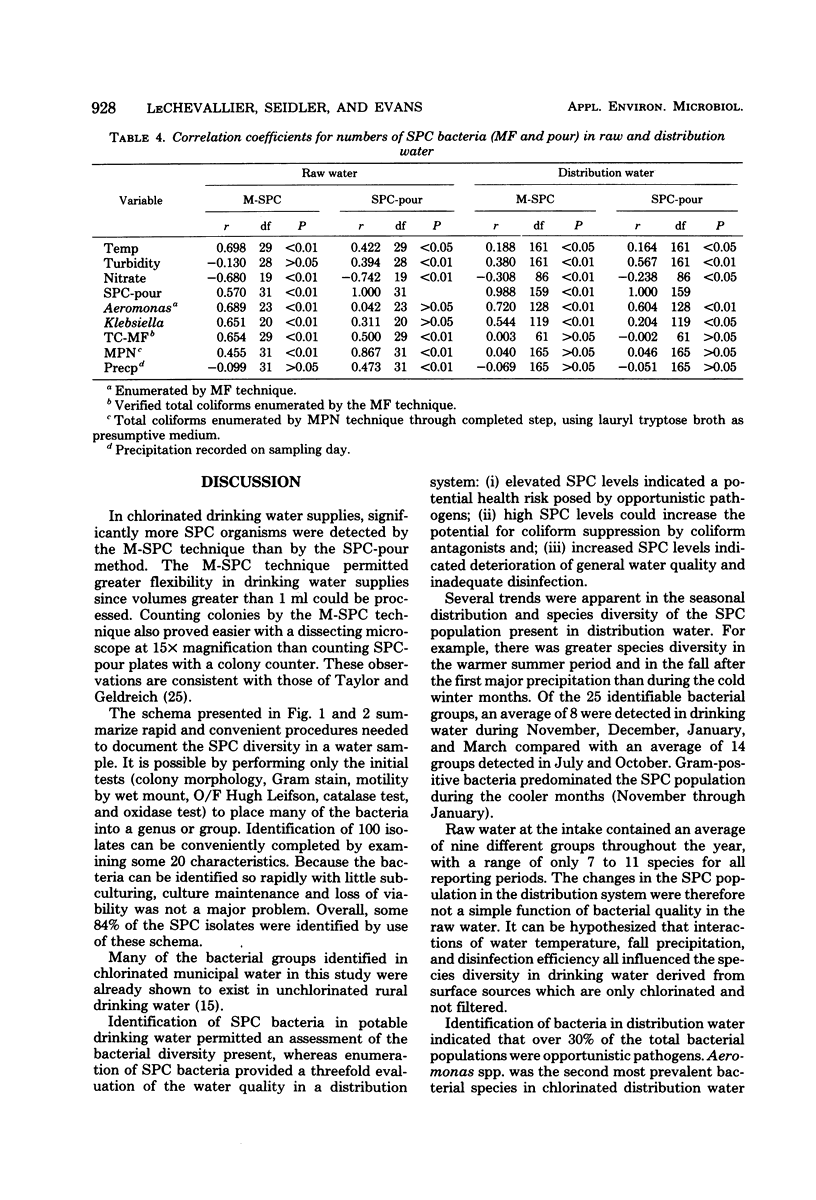
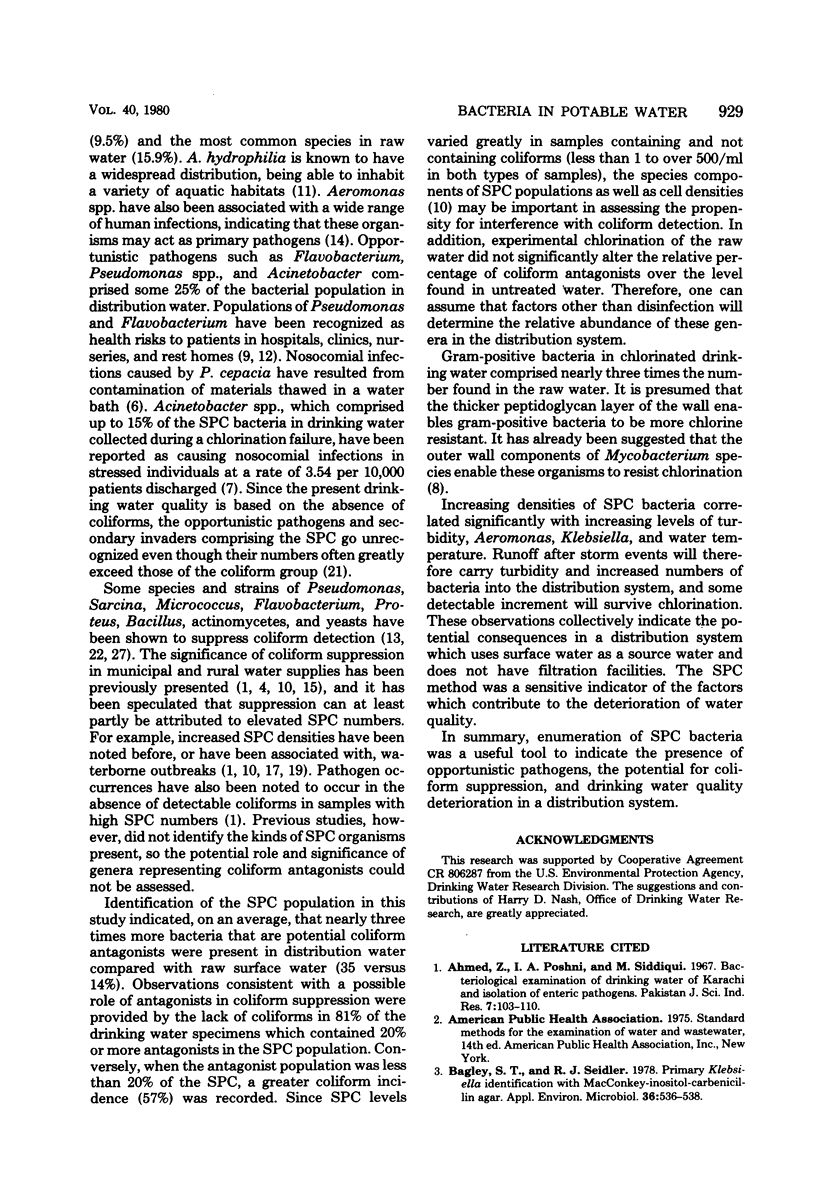
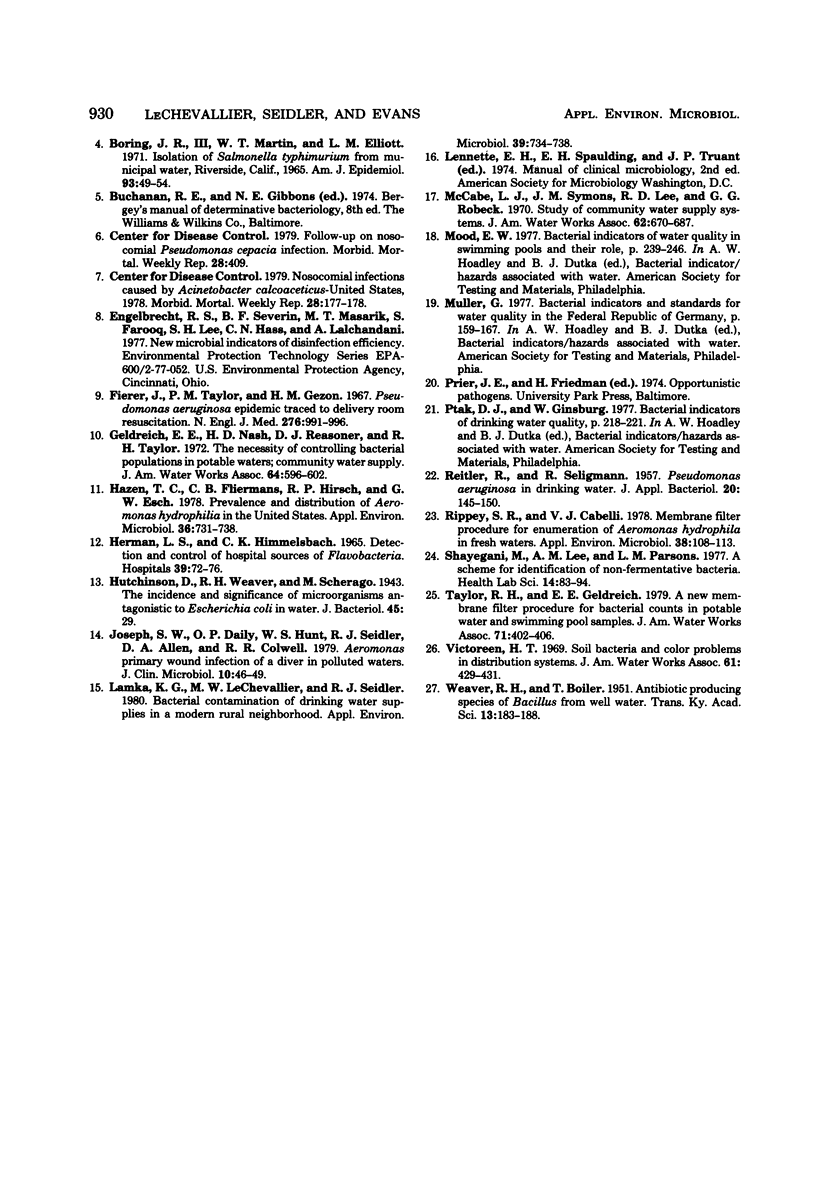
Selected References
These references are in PubMed. This may not be the complete list of references from this article.
- Bagley S. T., Seidler R. J. Primary Klebsiella identification with MacConkey-inositol-carbenicillin agar. Appl Environ Microbiol. 1978 Sep;36(3):536–538. doi: 10.1128/aem.36.3.536-538.1978. [DOI] [PMC free article] [PubMed] [Google Scholar]
- Boring J. R., 3rd, Martin W. T., Elliott L. M. Isolation of Salmonella typhi-murium from municipal water, Riverside, California, 1965. Am J Epidemiol. 1971 Jan;93(1):49–54. doi: 10.1093/oxfordjournals.aje.a121227. [DOI] [PubMed] [Google Scholar]
- Fierer J., Taylor P. M., Gezon H. M. Pseudomonas aeruginosa epidemic traced to delivery-room resuscitators. N Engl J Med. 1967 May 4;276(18):991–996. doi: 10.1056/NEJM196705042761801. [DOI] [PubMed] [Google Scholar]
- HERMAN L. G., HIMMELSBACH C. K. DETECTION AND CONTROL OF HOSPITAL SOURCES OF FLAVOBACTERIA. Hospitals. 1965 Jun 16;39:72–76. [PubMed] [Google Scholar]
- Hazen T. C., Fliermans C. B., Hirsch R. P., Esch G. W. Prevalence and distribution of Aeromonas hydrophila in the United States. Appl Environ Microbiol. 1978 Nov;36(5):731–738. doi: 10.1128/aem.36.5.731-738.1978. [DOI] [PMC free article] [PubMed] [Google Scholar]
- Joseph S. W., Daily O. P., Hunt W. S., Seidler R. J., Allen D. A., Colwell R. R. Aeromonas primary wound infection of a diver in polluted waters. J Clin Microbiol. 1979 Jul;10(1):46–49. doi: 10.1128/jcm.10.1.46-49.1979. [DOI] [PMC free article] [PubMed] [Google Scholar]
- Lamka K. G., LeChevallier M. W., Seidler R. J. Bacterial contamination of drinking water supplies in a modern rural neighborhood. Appl Environ Microbiol. 1980 Apr;39(4):734–738. doi: 10.1128/aem.39.4.734-738.1980. [DOI] [PMC free article] [PubMed] [Google Scholar]
- Rippey S. R., Cabelli V. J. Membrane filter procedure for enumeration of Aeromonas hydrophila in fresh waters. Appl Environ Microbiol. 1979 Jul;38(1):108–113. doi: 10.1128/aem.38.1.108-113.1979. [DOI] [PMC free article] [PubMed] [Google Scholar]
- Shayegani M., Lee A. M., Parsons L. M. A scheme for identification of nonfermentative gram-negative bacteria. Health Lab Sci. 1977 Apr;14(2):83–94. [PubMed] [Google Scholar]


